- Home
- Graham Hancock
The Message of the Sphinx AKA Keeper of Genesis
The Message of the Sphinx AKA Keeper of Genesis Read online
The Message of the Sphinx
Also by Robert Bauval
The Orion Mystery (with Adrian Gilbert)
Also by Graham Hancock
Journey Through Pakistan
Ethiopia: The Challenge of Hunger
AIDS: The Deadly Epidemic
Lords of Poverty
African Ark: Peoples of the Horn
The Sign and the Seal: A Quest for the Lost Ark of the Covenant
Fingerprints of the Gods: The Evidence of Earth’s Lost Civilization
The Message of the Sphinx
A Quest for the Hidden Legacy of Mankind
Graham Hancock
Robert Bauval
Three Rivers
Press New York
Copyright © 1996 by Graham Hancock and Robert Bauval
All rights reserved. No part of this book may be reproduced
or transmitted in any form or by any means, electronic or mechanical,
including photocopying, recording, or by any information storage and
retrieval system, without permission in writing from the publisher.
Published by Three Rivers Press, 201 East 50th Street,
New York, New York 10022. Member of the Crown Publishing Group.
Originally published in Great Britain by William Heinemann Ltd.,
and in the United States by Crown Publishers, Inc., in 1996.
Random House, Inc.
New York, Toronto, London, Sydney, Auckland
http://www.randomhouse.com/
THREE RIVERS PRESS and colophon are
trademarks of Crown Publishers, Inc.
Printed in the United States of America
Diagrams by Robert G. Bauval and R. J. Cook
Photographs 2, 3, 4, 5, 6, 8, 9, 10, 17, 18, 19, 20, 22,
24, 25, 26, 27, 28, 30, 31, and 32 by Santha Faiia.
Photographs 11, 12, 15, and 16 courtesy of Rudolph Gantenbrink.
Photograph 29 by Robert G. Bauval.
Photograph 7 courtesy of Venture Inward magazine.
Photograph 13 Spiegel TV.
Photograph 14 Antoine Boutros.
Photograph 1 The Lady Sophia Schilizzi.
Library of Congress Cataloging-in-Publication
Data is available upon request.
ISBN 0-517-88852-1
10 9 8 7 6 5 4 3 2 1
First Paperback Edition
To the memory of my father Gaston Bauval,
who rests in the land of Egypt.
Robert G. Bauval
To my friend, John Anthony West, for his twenty years of courageous work to prove the geological antiquity of the Sphinx, and for the vast implications of the evidence that he has put before the public. ‘The truth is great and mighty,’ as the ancient texts say. ‘It hath never been broken since the time of Osiris.’
Graham Hancock
Contents
Contents. 6
Line Illustrations. 10
Acknowledgements. 12
Part I 14
Chapter 1. 15
Enduring memories. 16
Stillness and silence. 17
Chapter 2. 19
Undatable, anonymous. 22
One syllable. 23
Context 25
Water erosion. 26
Not floodwaters. 27
Rainfall 28
A rude interruption. 29
When did it rain? 30
Jury still out 32
Chapter 3. 34
Impossible engineering. 36
How, why, when? 39
Memorials mighty. 42
Not purely symbolic boats. 45
The Pyramids. 46
High precision. 48
Chambers and passageways. 52
Inner space. 55
The stones of darkness and the shadow of death. 56
Very interesting developments. 58
Labyrinth. 60
The mystery of the shafts. 61
Chapter 4. 66
Observatory. 67
Targeting Stars. 69
The Companions of Osiris. 73
A perfect match. 74
Rising stars. 77
Lion on the ground, lion in the sky. 78
Motive in the texts. 85
Fundamental questions. 88
Part II 90
Chapter 5. 91
Trancing the Hall of Records. 93
The Scholar 95
Proof under the paws. 96
Anomalies. 97
A falling out 98
Granite structures. 99
The mapping surveys. 100
Pulling away. 101
Lunch with Mr. Cayce. 104
Correspondence. 106
Chapter 6. 107
Double standard. 108
The iron plate affair 111
Scientific analysis. 112
The British Museum’s view.. 114
Stargate. 115
Unknown dark distance. 117
Links. 119
The British Museum and the missing cigar box. 121
Chapter 7. 124
Planning an adventure. 125
Diversion and delay. 126
Upuant II 128
Problems with permits. 128
Discovery. 129
Much ado, then nothing. 131
Political games. 132
Breakfast with Gantenbrink. 133
Select groups. 133
Burial 134
Part III 136
Chapter 8. 137
Cosmic environment 138
Astronomical essence. 139
Otherworld. 140
Stars rising with the sun. 141
Cosmic river 143
Kingdom of Osiris in the sky. 144
‘First Time’ 145
Golden Age and the entry of evil 147
Shabaka texts. 149
Treasure trail 150
Sphinx god. 151
Roads of Rostau. 155
Chapter 9. 158
Celestial reflections. 158
Astronomer-priests. 159
Living image of Atum.. 161
Atum, Re and Horakhti 162
Horus, Dweller-in-the-Horizon. 165
The ‘Two Horizons’ of Heliopolis. 166
Strange silence. 168
Searching for Horakhti 169
Geographical and cosmological context 170
Chapter 10. 173
Child of the Sun, son of Osiris. 174
Seventy days from Horakhti 176
The High Road and the Low Road. 181
Subterranean world. 184
Tunnel 186
Stargate. 187
The Splendid Place of the ‘First Time’ 188
Part IV. 194
Chapter 11. 195
Three eras. 197
High initiates. 198
Following the Way of Horus. 199
Chapter 12. 202
Guardians of records. 203
Memories of the dawn. 204
Wisdom and knowledge. 206
Heliopolitan origins. 207
Cycle of the phoenix. 209
Ancestor gods. 210
Chapter 13. 213
Shining ones. 213
Legacy. 215
Gods and heroes. 216
Time bridge. 217
Following the vernal point 218
Chapter 14. 220
Journey in time. 221
Becoming equipped. 223
Unification. 225
High and far-off times. 227
Chapter 15. 230
Separation. 230
Doubles. 231
Link-up. 232
&nbs
p; Riding the vernal point 234
Secret spell 235
Special numbers. 237
Seekers after truth. 241
Chapter 16. 242
Anti-cipher 242
Durable vehicles. 244
Hints and memories. 245
The language of the stars. 247
Thought-tools. 248
Chapter 17. 251
Fine-tuning Leo. 252
Setting stars. 253
Sirius. 255
Cross-quarter causeways. 258
Treasure map. 266
Conclusion. 271
Osiris breathes. 273
Appendix 1. 276
A state of perfect order 279
Maat 281
Juggling for balance. 283
Three Wise Men. 285
Appendix 2. 288
Appendix 3. 294
Appendix 4. 300
Appendix 5. 304
Further developments. 304
The Great Pyramid. 304
The Great Sphinx. 305
The Edgar Cayce legacy. 308
Mars and Giza: 311
Selected Bibliography. 314
Line Illustrations
1. Profile of the Great Sphinx from the south.
2. Overhead view of the principal monuments of the Giza necropolis.
3. The Great Sphinx and the architectural complex that surrounds it.
4. The artificial ‘Horizon of Giza’.
5. Geodetic location of the Great Pyramid of Giza.
6. Cross-section of the Great Pyramid of Egypt.
7. Internal corridors and passageways of the three Pyramids of Giza.
8. Principal internal features of the Great Pyramid.
9. Detail of the corridors, chambers and shafts of the Great Pyramid
10. The complex internal design of the Great Pyramid.
11. The King’s and Queen’s Chambers and their four shafts.
12. Details of the Queen’s Chamber and its shafts.
13. Queen’s Chamber wall and shaft mouth.
14. Construction details of the Great Pyramid shafts.
15. The summer solstice as seen from Giza.
16. The trajectory of the sun on the summer solstice.
17. The trajectory of the sun on the equinox.
18. The trajectory of the sun on the winter solstice.
19. The horizon of Giza and the meridian of the Great Pyramid.
20. Culmination (meridian-transit) of Orion’s belt circa 2500 bc.
21. Orion and Osiris.
22. The stellar alignments of the Great Pyramid’s four shafts.
23. Orion’s belt crossing the meridian of the Great Pyramid in 2500 bc.
24. The sky-ground image of Giza-Orion’s belt in 10,500 bc.
25. The 10,500 bc ‘lock’ with Giza.
26. Artist’s impression of Orion’s precessional cycle at meridian.
27. The trajectory of Orion’s belt throughout the ages.
28. Pre-dawn at the spring (vernal) equinox in 10,500 bc.
29. Superimposed images of the rising of Leo in 2500 bc and 10,500 bc.
30. Sunrise at the spring (vernal) equinox in 10,500 bc.
31. Artist’s impression of the ‘First Time’ of Osiris-Orion.
32. ‘Sah’ (Osiris-Orion), the ‘Far Strider’.
33. Detail of Queen’s Chamber shaft.
34. The Memphite necropolis.
35. Sunrise at solstices and equinoxes as seen from Giza.
36. The sky region of the Duat.
37. Map of the apex region of the Nile Delta.
38. The ‘Land of Sokar’ in the Fifth Division of the Duat.
39. The Fifth Division of the Duat.
40. The summer solstice as seen from Giza circa 2500 bc.
41. The Denderah Zodiac.
42. Horakhti, ‘Horus-of-the-Horizon’.
43. Artist’s impression of ‘reconstructed’ Sphinx.
44. The Duat sky-region at dawn throughout the year, circa 2500 bc.
45. The ‘solar’ Horus crossing the Milky Way.
46. The ‘solar’ Horus in the paws of Leo.
47. The ‘astral’ Kingdom of Osiris in Rostau.
48. The Horus-King being led into the Great Pyramid.
49. The ‘astral’ Great Pyramid and its stargates.
50. The rising of Leo at the summer solstice circa 2500 bc.
51. The summer solstice circa 2500 bc.
52. The Horus-King statue between the paws of the Sphinx.
53. Osiris-Orion showing the way to his ‘Followers’, the Horus-Kings.
54. Artist’s impression of the ‘Mansion of the Phoenix’.
55. Osiris-Orion, Isis-Sirius and the Horus-Kings.
56. Great conjunction of the ancient skies at the spring (vernal) equinox circa 10,500 bc
57. The sky-Duat and the ground-Duat of Osiris.
58. The ‘drift’ of Orion from 10,500 bc to 2500 bc.
59. The setting of Orion’s belt and the ‘satellite’ pyramids of the ‘horizon’ of Giza in 10,500 bc.
60. Artist’s impression of the ‘First Time’ of Sirius, in the epoch of 10,500 bc.
61. The course of the sun throughout the year as viewed from the latitude of Giza.
62. The 14 degree north of east alignment of the Khufu causeway at the north cross-quarter sunrise.
63. The due east (equinox) alignment of the Menkaure causeway.
64. The 14 degree south of east alignment of the Khafre causeway at the ‘south’ cross-quarter sunrise.
65. The rising of Leo and the ‘south’ cross-quarter sunrise in 10,500 bc.
66. Hor-em-akhet (Sphinx) gazing at Horakhti (Leo) at the ‘south’ cross-quarter sunrise in 10,500 bc.
67. Profile of the Great Sphinx in the ‘ground-horizon’ of Giza.
68. The place-time datum of 10,500 bc under ‘Leo’.
69. Possible locations of an underground system of passageways and chambers beneath the Great Sphinx.
70. The Djed pillar of Osiris, flanked by Isis and Nepthys.
71. Sun-boat on the back of the double-lion hieroglyph for Aker; Great Pyramid looking west; Osirian Djed pillar looking west.
72. The Scales of Maat.
73. Cross-sections of the Great Pyramid showing the ‘balancing’ of the monument with the star-shafts.
74. The ‘scales’ of Orion at the ‘nadir’ and ‘apex’ of the current Precessional Cycle and the ages of Leo (10,500 bc) and Aquarius (2450 ad).
Acknowledgements
Robert G. Bauval:
Foremost, a special thanks to the readers. In the last two years I have received hundreds of letters of encouragement and good-will and it’s sure nice to know you’re all out there sharing in this common quest for truth.
I am immensely grateful for the patience and understanding of my wife Michele, and my two children, Candice and Jonathan.
Particular gratitude goes to the following relatives, friends and colleagues for their support: John Anthony West, Chris Dunn, Bill Cote, Roel Oostra, Joseph and Sherry Jahoda, Joseph and Laura Schor, Niven Sinclair, Marion Krause-Jach, Princess Madeleine of Bentheim, James Macaulay, Robert Makenty, Linda and Max Bauval, Jean Paul and Pauline Bauval, my mother Yvonne Bauval, Geoffrey and Thérèse Gauci, Patrick and Judy Gauci, Denis and Verena Seisun, Colin Wilson, Mohamed and Amin El Walili, Julia Simpson, Sahar Talaat, Professor Karl-Klaus Dittel and his wife Renate, Hani Monsef, Mark Ford, Peter Zuuring, Richard Thompson, Adrian Ashford, Dave Goode, Okasha El Daly, Mohamad Razek, Heike Nahsen, Ilga Korte, Gundula Schulz El Dowy, Antoine Boutros, Professor Jean Kerisel, Roy Baker, Murry Hope, William Horsman and Charlotte Ames.
I would like to convey my warm thanks to Bill Hamilton and Sara Fisher of A.M. Heath & Co., Ltd., for putting up with my pleonastic ways, Tom Weldon and all the staff at William Heinemann Ltd., Peter St. Ginna and Brian Belfiglio at Crown Publishing Inc., Melanie Walz and Doris Janhsen at Paul List Verlag, Udo Rennert of Wiesbaden, and Mohe
b Goneid and all the staff at the Movenpick-Jolie Ville at Giza.
Finally, I want to pay tribute to the engineer and my friend Rudolf Gantenbrink for opening the way for all of us with his bold and daring exploration in the Great Pyramid.
Robert G. Bauval,
Buckinghamshire, February 1996
Graham Hancock:
Special thanks and love to Santha, my wife and partner, my best and dearest friend. Love and appreciation to our children: Gabrielle, Leila, Luke, Ravi, Sean and Shanti. Special thanks also to my parents, Donald and Muriel Hancock, who have given me so much, and for the help, advice and adventurous spirit of my uncle, James Macaulay. Many of the individuals named in Robert’s acknowledgements likewise deserve my thanks: they know who they are. In addition I take this opportunity to send my personal good wishes to Richard Hoagland, Lew Jenkins, Peter Marshall, and Ed Ponist.
Graham Hancock,
Devon, February 1996
Part I
Enigmas
Chapter 1
Horizon Dweller
‘There is scarcely a person in the civilized world who is unfamiliar with the form and features of the great man-headed lion that guards the eastern approach to the Giza pyramids.’
Ahmed Fakhry, The Pyramids, 1961
A gigantic statue, with lion body and the head of a man, gazes east from Egypt along the thirtieth parallel. It is a monolith, carved out of the limestone bedrock of the Giza plateau, two hundred and forty feet long, thirty-eight feet wide across the shoulders, and sixty-six feet high. It is worn down and eroded, battered, fissured and collapsing. Yet nothing else that has reached us from antiquity even remotely matches its power and grandeur, its majesty and its mystery, or its sombre and hypnotic watchfulness.
It is the Great Sphinx.
Once it was believed to be an eternal God.
Then amnesia ensnared it and it fell into an enchanted sleep.
Ages passed: thousands of years. Climates changed. Cultures changed. Religions changed. Languages changed. Even the positions of the stars in the skies changed. But still the statue endured, brooding and numinous, wrapped in silence.

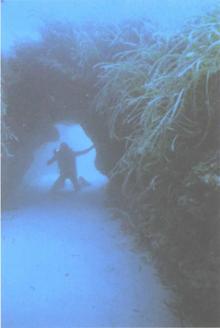 Underworld: The Mysterious Origins of Civilization
Underworld: The Mysterious Origins of Civilization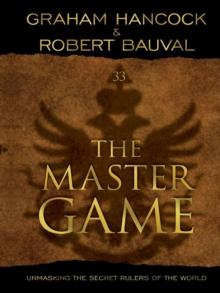 The Master Game: Unmasking the Secret Rulers of the World
The Master Game: Unmasking the Secret Rulers of the World America Before
America Before Entangled
Entangled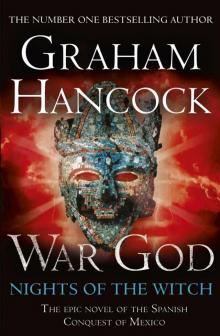 War God: Nights of the Witch
War God: Nights of the Witch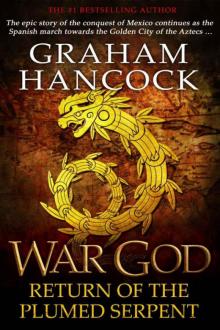 War God: Return of the Plumed Serpent
War God: Return of the Plumed Serpent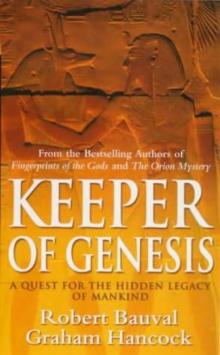 The Message of the Sphinx AKA Keeper of Genesis
The Message of the Sphinx AKA Keeper of Genesis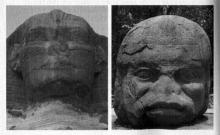 Fingerprints of the Gods
Fingerprints of the Gods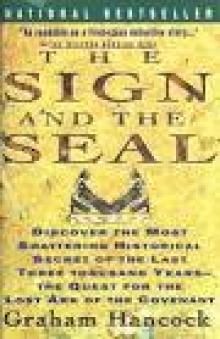 The Sign and the Seal
The Sign and the Seal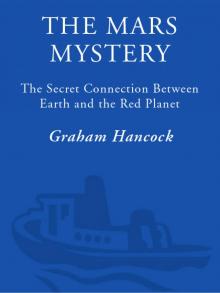 The Mars Mystery: The Secret Connection Between Earth and the Red Planet
The Mars Mystery: The Secret Connection Between Earth and the Red Planet Magicians of the Gods: The Forgotten Wisdom of Earth's Lost Civilization
Magicians of the Gods: The Forgotten Wisdom of Earth's Lost Civilization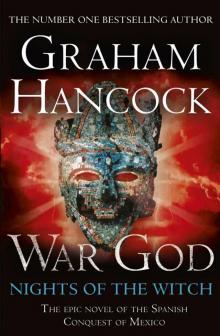 War God
War God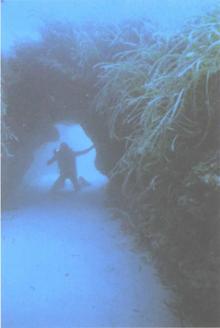 Underworld
Underworld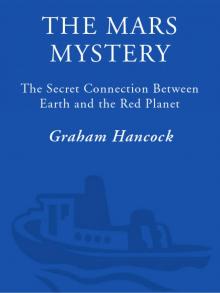 The Mars Mystery
The Mars Mystery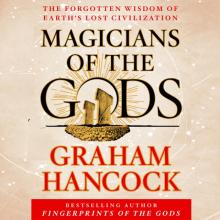 Magicians of the Gods
Magicians of the Gods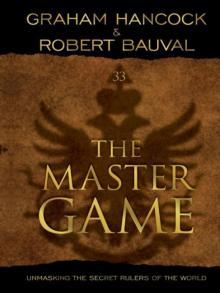 The Master Game
The Master Game